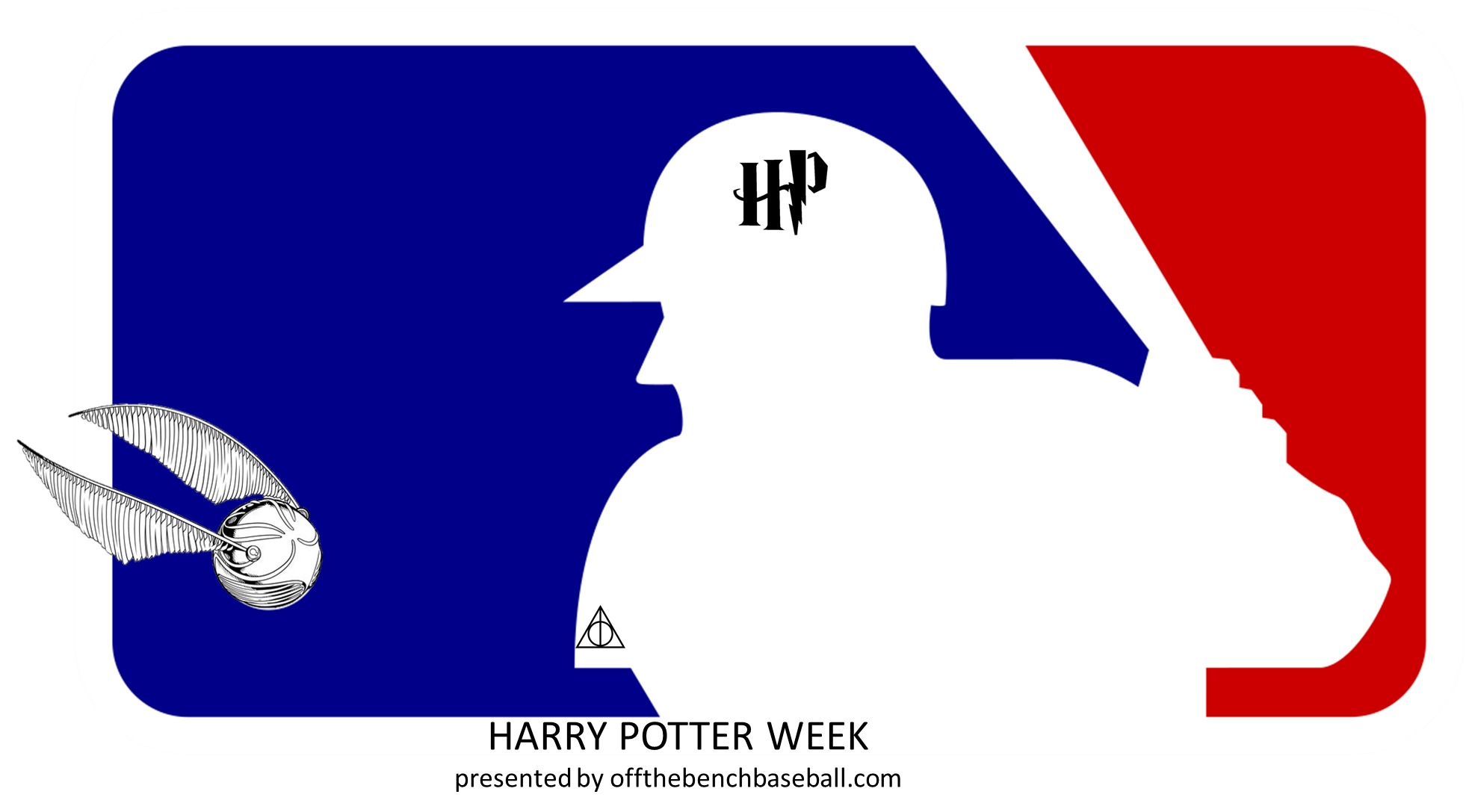What if Baseball Bats Were Replaced by Wizarding Wands?

It’s Harry Potter week here at Off The Bench, which basically means that I have taken some editorial liberty from my fellow bloggers and afforded myself an opportunity to ask ridiculous questions like the one in the title of this post. It turns out that maybe it’s not so ridiculous. According to the HP wiki, An article by E. Lambini was published in the 6 December 1926 issue of The New York Ghost that discussed how the wizarding community
The baseball bat has grown since 1926, but not that much. Certain players prefer the ax handle bat now, and a portion of the bats have a little bit cupped out of the top to adjust the weighting depending on preference, but MLB governs these things pretty heavily. In 2011, I looked at how the change in maximum allowable bat diameter could have affected hitting performance. Turns out, that there’s only so much that can be done within the rules of what makes up a “bat.” MLB says it cannot be larger in diameter than 2.61 inches. That specific figure has no real basis in my mind, but it’s the rule.
The wizarding world is far less specific on the instruments that their brethren wield. Given that wands are quasi-sentient – the wand chooses the wizard after all – this makes some sense. Wands generally vary in length from 9 to 15 inches and are rather thin. They contain some sort of magical thing on the inside such as unicorn hair, or dragon heartstring, and they really only work well with their one non-muggle owner.
Before getting into the implications of using a wand (or a set of wands) for baseball purposes, we need to establish a few ground rules. First, in this Harry Potter Off The Bench scenario, baseball can be played by both muggles and wizards. It’s long been something of a unifying sport; I don’t see how it would be any different in the wizarding world. Second, no magic allowed. Baseball is magical enough already, we don’t want magic ruining the sport.
Now for the actual practicalities of wand-bat baseball.
The inside of the wand, the core part that gives it its significance, sure feels like a corked bat. We don’t want any particular kind of wand being more effective than the next. So Commissioner Sean ordered a scientific test to assess which, if any, wand-bat imparted a more significant buoyancy effect on the ball. The results showed that Phoenix feather was unfairly powerful and it has thus been outlawed, just like Sammy Sosa’s corked bat.
The length of a wand varies in length but that’s no real problem. Real baseball hasn’t standardized the length of a bat, but most players prefer to wield a stick that’s roughly 250% longer than the average wand. The shortness of the wand-bat relative to the traditional baseball bat tells me that we’re going to have to commit to wand-only baseball bats in our world. That’s fine, but the real issue here is that a roughly 15-inch bat would make it exceedingly difficult to cover the outside of the plate. As such, we’ll simply narrow the plate a bit.
The thickness of wands presents a troublesome problem for baseball use. Wands are powerful, but somewhat prone to breaking. They’re also often smaller towards the end – with the pointed shaft hardly ideal for making contact with a baseball zigging and zagging everywhere. Maybe a specialty wandmaker would develop an appropriately thick and evenly distributed wand for baseball use. Indeed, there are rumors that the Nimbus company is considering a foray into baseball wands.
How one swings a wand-bat is obviously up to the individual. I would venture that most would opt to swing one handed, allowing for greater exposed contact surface and lowering the probability of painfully getting hit in the hand while attempting to swing. There are many effects attributable to the one-handed swing. Obviously, power numbers would go down; home runs would be more scarce. Similarly clear, is that speedy players would be more highly valued and that the game would be played in a more confined space. Effectively, a wand-bat necessitated one-handed swing would bring baseball closer to softball. Perhaps that’s OK. Certain sacrifices must be made in the name of inclusion.
Since wands are quasi-sentient, their loyalties lie with their owner, until that owner is defeated. Using them as baseball would effectively mean that each baseball season is a single elimination tournament. Whoever loses the first game, could potentially no longer have a wand with which to play. I’ll assume wands are willing to suspend these laws in the name of competition, but I do wonder if loyalties would lie with a team or with a given player. If a player is traded, does he have to find a new wand? We’ll have to ask a wand about that one.
Harry Potter can do a whole lot with a wand and he could even play baseball with it. We’ve tweaked some wand-baseball rules to make the sport more reasonably resemble the baseball that we’re accustomed to. Undoubtedly, there are wand-bat repercussions that I have not considered here, but those could be handled through further tweaks in the rules, much the same way that instant replay has been tweaked as the years have rolled on. The first step is simply to try it.
-Sean Morash












